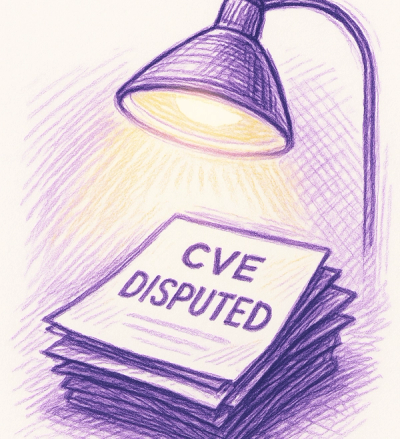
Security News
Google’s OSV Fix Just Added 500+ New Advisories — All Thanks to One Small Policy Change
A data handling bug in OSV.dev caused disputed CVEs to disappear from vulnerability feeds until a recent fix restored over 500 advisories.
simply-resourceful
Advanced tools
The Simple Resource Manager
Explore the docs »
Report Bug
·
Request Feature
Simply Resourceful is a simple resource manager, designed to work alongside pygame. It offers deferred loading of resources, as well as a simple way of accessing those resources in your code, making swapping out resources a breeze.
Simply Resourceful is written in pure python, with no system dependencies, and should be OS-agnostic.
Simply Resourceful can be installed from the PyPI using pip:
pip install simply_resourceful
and can be imported for use with:
import resourceful
Simply Resourceful has no mandatory dependencies, but has some extra options when Pygame Community Edition is installed.
Assets can often be a heavy burden on memory. The process of loading them from file or downloading them can also be intensive. Having your assets loaded only once, and then reused whenever needed, can help reduce the load. Additionally, instead of loading all assets immediatly, lazy loading allows the load times to be deferred until an asset is needed, and never coming into memory at all if never requested.
Resource Managers are created with
import resourceful
MANAGER = resourceful.getResourceManager(<type>, "handle")
Where <type> is the class of resource to be managed.
This will ensure that a resource manager for the given type and of the given handle exists. Handles are optional, but are useful for having resource managers with different loading behavior despite the same resource type, without increasing the complexity of the loader function.
Note that for the rest of the document, 'resource' and 'asset' may be used interchangeably.
Additionally, if you have pygame-ce installed, you also gain eccess to two additional methods, resourceful.getImageManager() and resourceful.getSoundManager(). These are preconfigured resource managers for loading images and sounds from disk, respectively. They are not tracked by the Resource Manager, and must be gotten with these methods. These prebuilt managers are designed to take file paths for their resource location data.
Resource Managers are generic, and can handle almost any type of data. The type you want the resource manager to handle must be specified before use.
import pygame
import resourceful
MANAGER = resourceful.getResourceManager(pygame.Surface)
In this example, a resource manager that handles pygame surfaces will be created or found, if it exists, with a blank handle. This might be useful for storing images loaded into memory in one single place.
Resources are referenced by asset handles, which are strings that ascribe common names to their resources. They are used as such:
sprite.image = image_manager.get("Hero")
This will check the manager for an asset called "Hero", load it if necessary, and supply the sprite with it for display.
In more complicated use cases, it may be desirable to supply a default value. This may be because the asset handle being requested is coming from elsewhere, and might not be guaranteed to be correct, and something is needed to fill the gap.
That use case would look something like this:
sprite.image = image_manager.get(current_hero_pose, hero_blank_sprite)
This way, if current_hero_pose accidentally refers to an invalid resource, the program will not crash.
Before any assets are requested, the resource manager must be made aware of the assets it will manage. This must be done early on in the program, before any manager.get() operations are called.
# ---Program set up stuff---
# Global variables and such, module initialization, whatever.
manager.import_asset("Hero", "path/to/hero.png")
In this example, the manager now is aware of an asset called "Hero", as well as a path to find it for loading.
Location data can be anything the loader function can use to generate the asset. Typically, it will be a file location, but could also be a tuple of draw data for drawing surfaces, or data for downloading an asset from a database, or anything else, really.
Assets can also be force-loaded, which is similar to importing, but loads the asset into memory from its location data immediately, no need to have something call get(). This might be useful for assets that are guaranteed to be used immediately.
Alternatively, you may also perform a mass import, using
manager.import_directory("path/to/asset/folder")
This will import everything from the given directory. It has additional options, such as searching subfolders, and filter functions to change filtering, naming, and location data generation. This provides an easier to use way to import many assets, at the cost of control.
By default, import_directory will import all files regardless of file type, names them based on their file name (and subfolder, if enabled), and gives their file path as their location data.
It may be advisable to keep a separate module that contains all of your asset imports. This will collect them all in one place, outside of your main program code.
Because resource managers are generic, they have no inherent knowledge of how to load any given resource. So, a loader function must be supplied. For example:
def image_loader(resource_location: Path | str) -> pygame.Surface:
asset = pygame.image.load(resource_location)
return asset.convert()
# ---Program set up stuff---
# Global variables and such, module initialization, whatever.
manager.config(loader_helper=image_loader)
manager.import_asset("Hero", "path/to/hero.png")
This will load the image from the path, and convert it to be ready for use.
Loader functions only have two requirements:
Additionally, in an async-aware environment, you could have your loader begin a coroutine to download your asset, and return a default asset to tide things over until then, updating the asset upon completion.
From there, the resource manager will take over, loading and supplying resources as needed by other parts of the program.
A default asset may be provided in the config function, allowing suppression of errors for loading failures by always having an option to fill in any blanks. If get() is called with a default value, it will override the manager-level default asset.
None is considered a valid default, and should be handled appropriately. Simply Resourceful makes use of a sentinel value called NoDefault to determine that a default value does not exist or shouldn't be used.
manager.config(default_asset=some_asset)
With pygame-ce installed, you additionally have access to two preconfigured resource managers, one for images (built around pygame Surfaces), and one for sounds. These both handle loading their respective resources automatically, and require PathLike data for their resource_location data.
See the open issues for a full list of proposed features (and known issues).
Distributed under the MIT License. See LICENSE.txt for more information.
Better Built Fool - betterbuiltfool@gmail.com
Bluesky - @betterbuiltfool.bsky.social
Project Link: https://github.com/BetterBuiltFool/simply_resourceful
FAQs
A lazy-loading resource manager, especially for use with pygame-ce
We found that simply-resourceful demonstrated a healthy version release cadence and project activity because the last version was released less than a year ago. It has 1 open source maintainer collaborating on the project.
Did you know?

Socket for GitHub automatically highlights issues in each pull request and monitors the health of all your open source dependencies. Discover the contents of your packages and block harmful activity before you install or update your dependencies.

Security News
A data handling bug in OSV.dev caused disputed CVEs to disappear from vulnerability feeds until a recent fix restored over 500 advisories.

Research
/Security News
175 malicious npm packages (26k+ downloads) used unpkg CDN to host redirect scripts for a credential-phishing campaign targeting 135+ organizations worldwide.

Security News
Python 3.14 adds template strings, deferred annotations, and subinterpreters, plus free-threaded mode, an experimental JIT, and Sigstore verification.